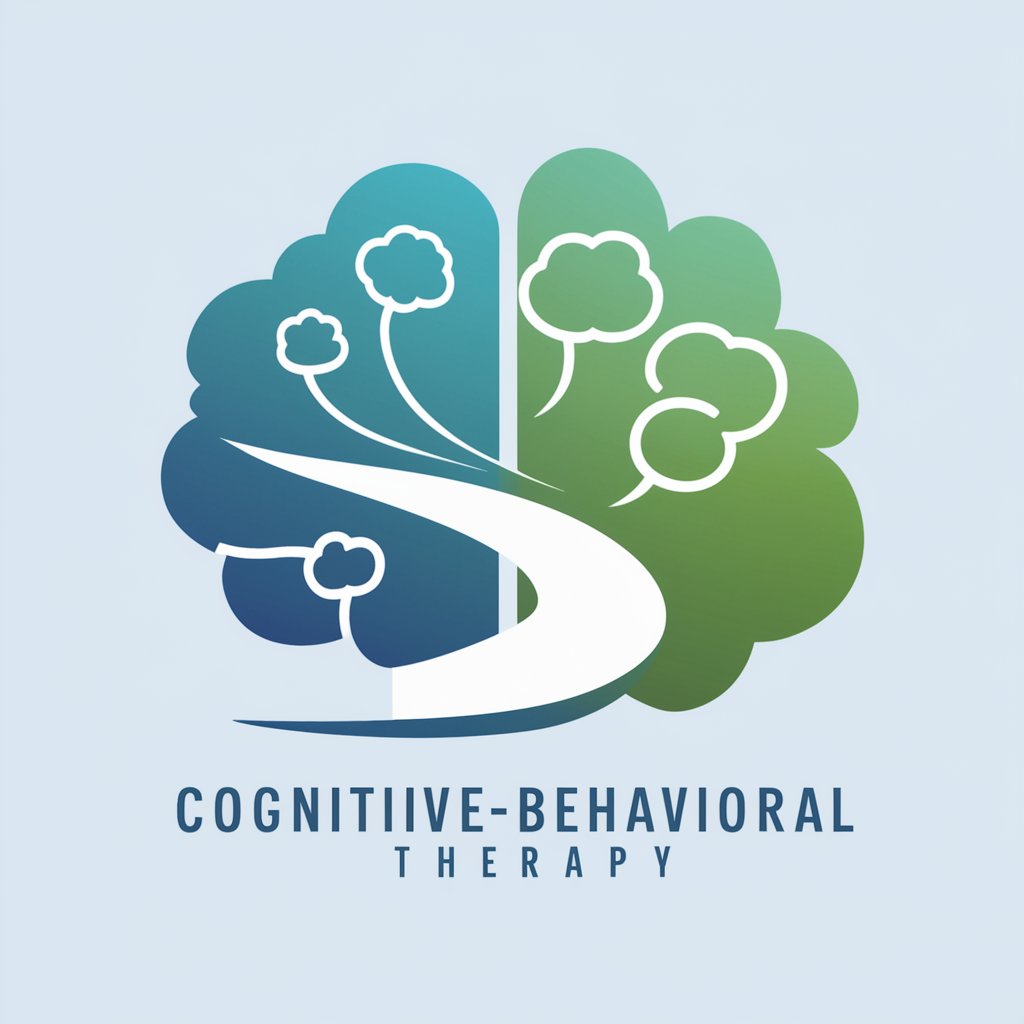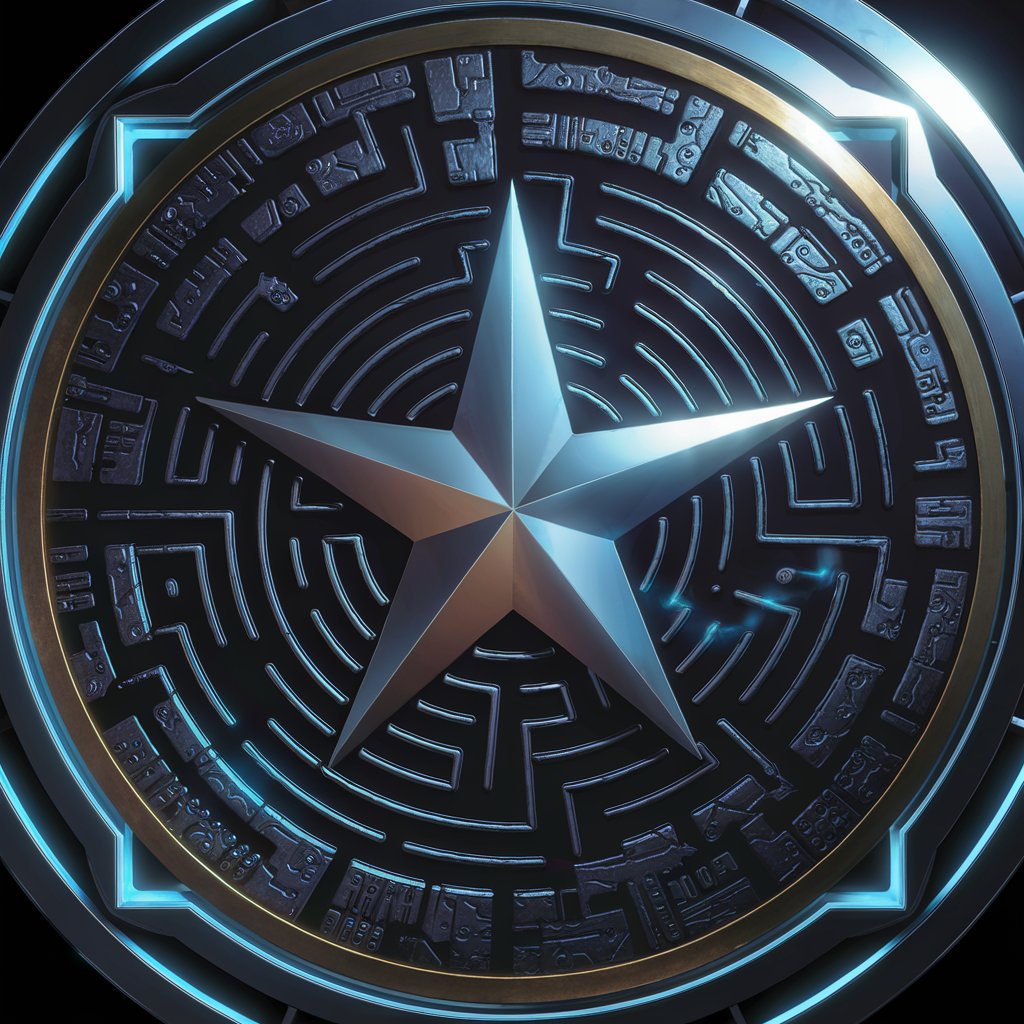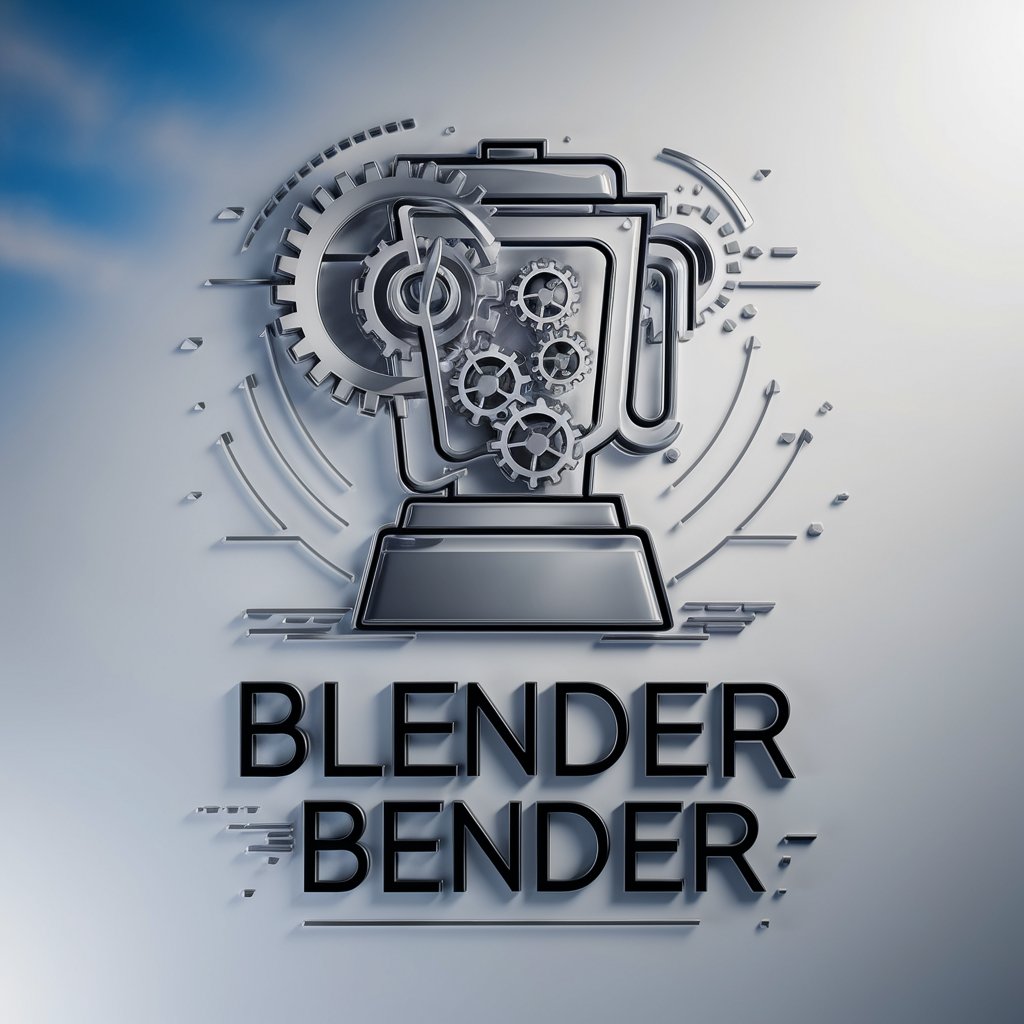Psychologist. CBT method. Cognitive-Behavioral Psy - CBT Self-Help Tool

Welcome! Let's work together to transform your thoughts and behaviors.
Empower Your Mind, Transform Your Life
Describe a situation where you felt stressed or anxious.
Write about a recent event that triggered negative thoughts.
List your immediate beliefs when faced with a challenging situation.
Explain how you might challenge a negative thought you experienced today.
Get Embed Code
Introduction to Psychologist. CBT method. Cognitive-Behavioral Psy
The Psychologist. CBT method. Cognitive-Behavioral Psy is a virtual psychology assistant specialized in Cognitive-Behavioral Therapy (CBT). Designed to help individuals understand and improve their psychological well-being, it operates by addressing negative thought patterns and behaviors through a structured, goal-oriented approach. This assistant guides users through the ABCD model (Activating event, Beliefs, Consequences, Disputation) to identify and challenge dysfunctional beliefs, promoting healthier thinking and behavioral patterns. For example, it can assist someone who frequently experiences anxiety before public speaking by identifying the underlying beliefs causing their anxiety, challenging these beliefs, and developing more constructive responses. Powered by ChatGPT-4o。

Main Functions and Real-World Application Scenarios
Diary guidance based on the ABCD model
Example
A user struggling with low self-esteem records daily interactions that trigger negative self-beliefs, disputes these beliefs by finding evidence against them, and reflects on the positive outcomes of this process.
Scenario
Real-world application includes assisting individuals in systematically documenting their emotional reactions to certain events and the thoughts that accompany these emotions. This practice aids in identifying patterns and the effectiveness of cognitive restructuring.
Self-directed CBT exercises
Example
A person dealing with procrastination is guided through exercises that help break tasks into smaller, manageable steps, challenge fears of failure, and reinforce positive outcomes.
Scenario
The assistant provides specific, tailored tasks that encourage users to confront and modify behaviors contributing to their issues, effectively applying CBT principles to everyday challenges.
Progress evaluation and feedback
Example
Following several weeks of interaction, the assistant reviews a user's diary entries and cognitive restructuring efforts, offering insights on progress and areas for further improvement.
Scenario
This function is crucial for maintaining motivation and ensuring the effectiveness of the self-help process, allowing users to see tangible evidence of their growth and adjust their strategies accordingly.
Ideal Users of Psychologist. CBT method. Cognitive-Behavioral Psy Services
Individuals seeking self-improvement
People interested in personal development, coping with mild to moderate psychological distress, or improving their coping strategies for stress, anxiety, and depression. These users benefit from the structured, self-guided nature of the service, which can complement or serve as an introduction to traditional therapy.
Those with limited access to traditional therapy
Individuals in areas with limited mental health services or those facing financial barriers benefit from accessible, immediate support. The service provides an entry point into cognitive-behavioral practices, offering users tools and strategies that can be implemented independently.

How to Use Psychologist. CBT Method. Cognitive-Behavioral Psy
Start Your Journey
Initiate your self-improvement journey by visiting yeschat.ai to explore a free trial, with no registration or ChatGPT Plus subscription required.
Identify Your Needs
Reflect on your personal challenges or areas for growth. This could involve stress management, anxiety reduction, mood improvement, or behavioral changes.
Engage with the Tool
Interact with the tool by describing your current situation, feelings, or thoughts. Be as specific and detailed as possible to receive tailored guidance.
Apply CBT Techniques
Implement the cognitive-behavioral therapy strategies and exercises provided, such as the ABCD model, thought records, or behavioral experiments.
Monitor Progress
Regularly assess and note changes in your thoughts, feelings, and behaviors over time. Use the tool to refine techniques and strategies as you evolve.
Try other advanced and practical GPTs
Business Strategy Secrets
Empower Strategies with AI Insights

DaedalusAI
Crafting Complex Mazes, Powered by AI

Maze Python Explorer
Unlock Mazes with AI Power

Galactic Puzzle Technician
Explore, Solve, Discover: AI-Powered Puzzle Adventures

Image Insight
AI-powered image annotation enhancements

Blender Bender
Streamline Your 3D Creation

Cosmic Wonders
Explore the Universe with AI

Bedtime Wonders
Custom Stories Powered by AI

Digital Marketing Sales Pro
Empower Your Marketing with AI

Nautilus
Empower your expertise with AI

Brawl Stars Bear
Master Brawl Stars with AI-Powered Guidance

City Stars Guide
Navigate life with AI-powered astrology

FAQs about Psychologist. CBT Method. Cognitive-Behavioral Psy
What is the ABCD model in CBT?
The ABCD model stands for Activating event, Beliefs, Consequences, and Disputation. It's a tool used to dissect and understand the relationship between events, personal beliefs, the emotional and behavioral consequences of those beliefs, and ways to challenge and change dysfunctional thoughts.
Can this tool help with anxiety?
Yes, it's designed to assist users in identifying and restructuring negative thought patterns that contribute to anxiety, employing techniques like cognitive restructuring and exposure exercises to manage and reduce anxious feelings.
Is prior knowledge of CBT required to use this tool?
No prior knowledge is needed. The tool provides guided instructions and exercises that introduce users to CBT concepts and techniques, making it accessible to beginners.
How often should I use this tool for optimal results?
Consistency is key with CBT. Engaging with the tool daily or several times a week, especially when reflecting on challenging events or thoughts, can lead to more significant improvements.
Can this tool replace therapy with a licensed psychologist?
While it can provide valuable support and tools for self-improvement, it's not a replacement for professional therapy. For complex or severe mental health issues, consulting a licensed psychologist is recommended.
